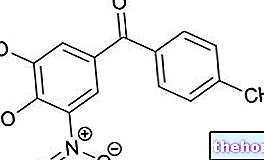
What is Infanrix Penta?
Infanrix Penta is a vaccine, available as a suspension for injection. The medicine contains the following active ingredients: toxoids (chemically weakened toxins) of diphtheria and tetanus, parts of the Bordetella pertussis (the bacterium that causes whooping cough), parts of the hepatitis B virus and inactivated (killed) poliovirus.
What is Infanrix Penta used for?
Infanrix Penta is used to vaccinate children under the age of three against diphtheria, tetanus, pertussis, hepatitis B, polio. The medicine is also used for booster vaccinations.
The medicine can only be obtained with a prescription.
How is Infanrix Penta used?
The recommended vaccination schedule with Infanrix Penta is two or three doses, given at least one month apart, usually within the first six months of life. Infanrix Penta is administered by deep intramuscular injection. The injection site should be alternated for subsequent administrations. A booster dose of Infanrix Penta or a similar vaccine should be given at least six months after the last dose in the initial series. The choice of which vaccine to use depends on official recommendations.
The medicine can be given to babies vaccinated against hepatitis B at birth.
How does Infanrix Penta work?
Infanrix Penta is a vaccine. Vaccines work by "teaching" the immune system (the body's natural defense system) to defend itself against a disease. Infanrix Penta contains small amounts of:
- toxoids from bacteria that cause diphtheria and tetanus;
- toxoids and other purified proteins from the bacterium B. pertussis;
- surface antigen (proteins from the outer membrane) of the hepatitis B virus;
- inactivated polioviruses (types 1, 2 and 3);
When a person is vaccinated, the immune system recognizes fragments of the virus as "foreign" and makes antibodies against that virus. In case of exposure to viruses or bacteria after vaccination, the immune system will be able to produce antibodies more quickly. thus protecting from the diseases caused by these microorganisms.
The vaccine is "adsorbed", which means that the active ingredient is fixed on aluminum compounds to stimulate a better response. The surface antigens of the hepatitis B virus produced by a method known as "recombinant DNA technology": they are produced by a yeast that has received a gene (DNA) which makes it capable of producing the substance.
Infanrix Penta is a combination of components already available in the European Union (EU) in other vaccines: elements of the diphtheria, tetanus, pertussis and hepatitis B virus bacteria were available in Infanrix HepB from 1997 to 2005, and elements of the diphtheria, tetanus, pertussis, poliovirus and bacterium bacteria Hib they are available in other vaccines.
How has Infanrix Penta been studied?
Infanrix Penta has been studied in 16 studies that looked at the initial vaccination series of over 10,000 infants, three quarters of whom were immunized with Infanrix Penta according to various vaccination courses. Infanrix Penta has also been studied in nine booster vaccination studies involving over 4,000 infants, of which 714 received Infanrix Penta as a booster dose. The main measure of effectiveness was the production of antibodies against the active substances after vaccination.
What benefit has Infanrix Penta shown during the studies?
Studies have shown that the initial vaccination series with Infanrix Penta induced the production of protective levels of antibodies. One month after vaccination, between 86 and 100% of infants had developed protective levels of antibodies against all active ingredients of Infanrix Penta. After booster vaccination, there was an increase in the number of infants with protective levels of antibodies against the active ingredients.
What is the risk associated with Infanrix Penta?
The most common side effects seen with Infanrix Penta (seen in more than one in 10 doses of the vaccine) are: loss of appetite, fever of 38 degrees Celsius and above, swelling, pain and redness at the injection site, fatigue, unusual crying, irritability and restlessness. See the package leaflet for the full list of side effects reported with Infanrix Penta.
Infanrix Penta must not be used in children who may be hypersensitive (allergic) to the active substances or to any of the other ingredients in the vaccine, or to neomycin and polymyxin (antibiotics), or if children have had an allergic reaction after a vaccination containing elements from bacteria of diphtheria, tetanus, pertussis, hepatitis B virus, polio or bacterium Hib. Infanrix Penta must not be given to children with encephalopathies (a brain disease) of unknown cause for seven days following a vaccination containing components of the pertussis bacterium. Vaccination with Infanrix Penta should be postponed in children with sudden high fever.
As with all vaccines, if Infanrix Penta is given to very premature infants there is a risk of causing apnea (short pause in breathing). Infants' breathing should therefore be monitored for up to three days after vaccination.
Why has Infanrix Penta been approved?
The Committee for Medicinal Products for Human Use (CHMP) decided that Infanrix Penta's benefits are greater than its risks for the initial and booster vaccination of children against diphtheria, tetanus, pertussis, hepatitis B, polio and the pathologies caused by Hib. The Committee recommended that Infanrix Penta be given marketing authorization.
More information about Infanrix Penta
On 23 October 2000 the European Commission released GlaxoSmithKline Biologicals s.a. a "Marketing Authorization" for Neulasta, valid throughout the European Union. The "Marketing Authorization" was renewed on 23 October 2005.
The full version of the EPAR for Infanrix Penta can be found here.
Last update of this summary: 11-2008.
Information on Infanrix Penta published on this page may be out of date or incomplete. For a correct use of this information, see the Disclaimer and useful information page.




























